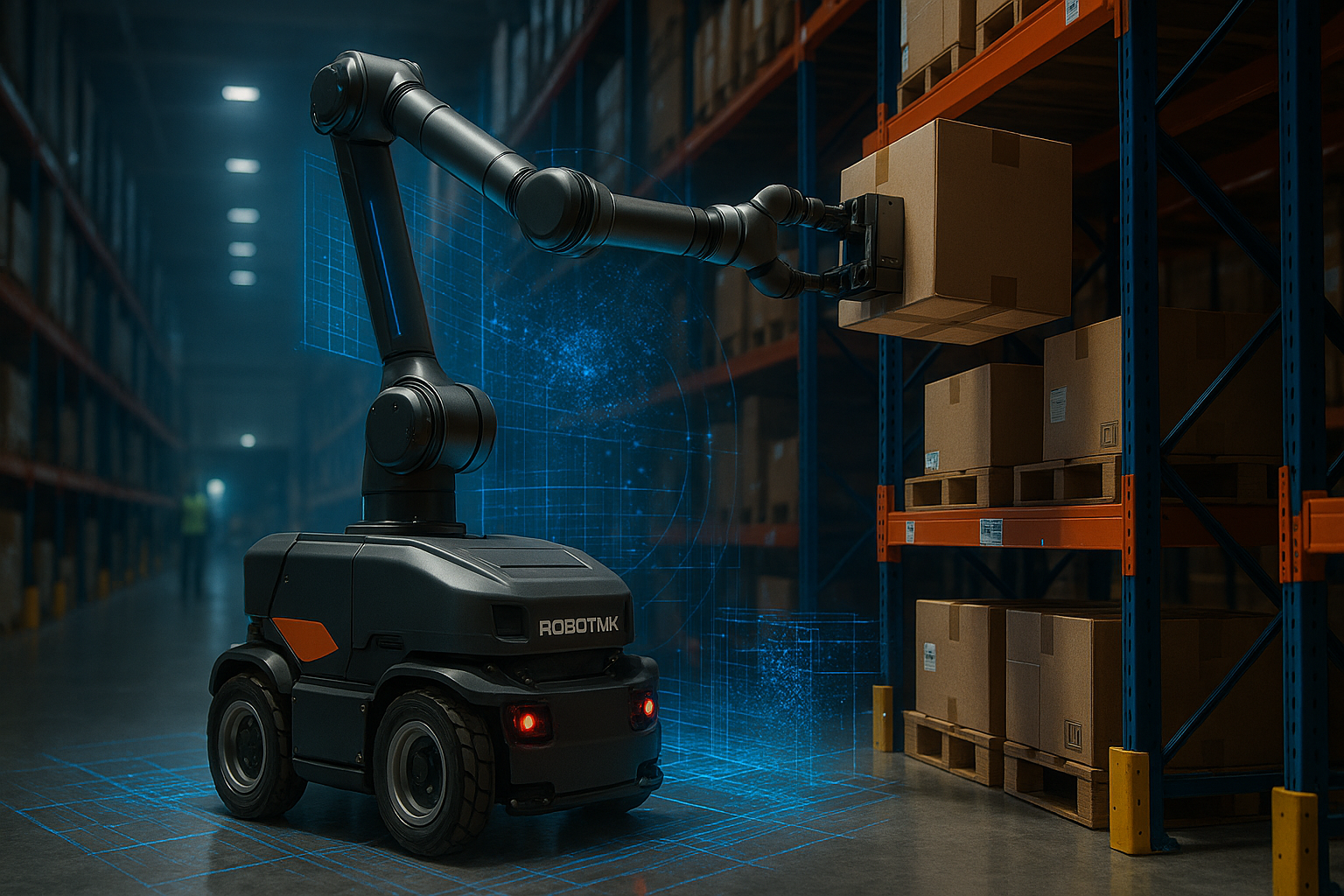The logistics and warehousing sectors are undergoing a profound transformation. Faced with relentless pressure on speed, cost, and efficiency, companies are turning to the most sophisticated tool in the robotic arsenal: the Autonomous Mobile Manipulator (AMM). These robots, which combine the mobility of an AMR (Autonomous Mobile Robot) with the dexterity of a robotic arm, are set to revolutionize everything from e-commerce fulfillment to industrial assembly, bridging the gap between simple transportation and complex interaction.
Traditionally, automation in logistics was compartmentalized: mobile robots handled transport, while fixed industrial arms performed precise manipulation. The AMM breaks this barrier by allowing for **on-the-move manipulation**. This trend is fueled by the falling costs of advanced sensors, powerful computing, and the maturity of technologies like **SLAM (Simultaneous Localization and Mapping)** and deep reinforcement learning (DRL). This convergence creates a system capable of navigating dynamic warehouse floors and executing complex tasks like picking, sorting, or machine tending at various locations.
A critical enabler for AMM deployment is the concept of **Sim-to-Real** transfer, often utilizing **Digital Twins**. Training a robot with a physical arm and mobile base in the real world is slow, risky, and expensive. Instead, companies and researchers, including the AIST Joint Robotics Laboratory, develop control algorithms and perception models in high-fidelity simulation environments. This simulated data, sometimes referred to as **synthetic data**, allows robots to learn millions of operational scenarios before ever touching a real object.
Visualizing the mobile manipulator's task: autonomous navigation combined with precise arm dexterity.
This Sim-to-Real pipeline provides three major benefits for rapid deployment:

Despite the advances in simulation, the "Sim-to-Real Gap" remains the central technical challenge. The real world introduces variables that digital models struggle to capture perfectly. To ensure robustness, robotics companies rely on specific techniques to bridge this gap, allowing systems like those developed by **Robotnik** (e.g., RB-KAIROS+ or RB-THERON+) to operate reliably:
The true disruptive potential of mobile manipulators lies in their ability to automate high-variability tasks previously reserved for humans. The market is shifting from large, fixed installations to flexible, collaborative systems that can safely share the workspace with human personnel. This collaboration is paramount in ensuring safety, a significant challenge addressed by advanced sensor suites and compliant robotic arms.
In **logistics**, AMMs will automate the messy middle: from retrieving non-standard items off shelves (piece picking) to re-palletizing and preparing items for the last mile delivery. **Robotnik's** Autonomous Mobile Manipulators are already oriented toward these tasks, emphasizing flexibility for both indoor industrial environments and outdoor logistics operations. The ongoing research from institutions like AIST into human-robot interaction and coordinated transport further paves the way for a deeply integrated automation layer.
The integration of mobile manipulation is not just a technological upgrade; it is a strategic necessity for global commerce. By combining flexible mobility with complex dexterity, the mobile manipulator promises to deliver the efficiency the industry desperately needs, making the future of the **supply chain** faster, cheaper, and fundamentally smarter. The revolution is no longer just simulated; it is becoming real.
Mobile Manipulators Robots - Robotnik
Robotnik Mobile Manipulators Product PageMobile robotics: Enhancing supply chain and logistics efficiency - Robotnik
Robotnik on Logistics EfficiencyPick and Place Operations in Logistics Using a Mobile Manipulator Controlled with Deep Reinforcement Learning - DOAJ
DRL for Mobile Manipulator Pick and PlaceCNRS-AIST JRL (Joint Robotics Laboratory), IRL3218
CNRS-AIST JRL ResearchIntegration of Manipulation, Locomotion, and Communication Intelligent RT Software Components...
AIST's OpenRT Platform for Mobile ManipulatorsINTERVIEW WITH ROBOTNIK - FineEngineering Magazine
Robotnik on Autonomous Mobile ManipulationCALL: Cobotic AppLication for handover and Load transport - CNRS-AIST JRL
AIST/CNRS Collaborative Robotics Project